Weight vs. Volume is a recurring question that many soapers, lotion makers and general crafters have grappled with in the pursuit to make the perfect product. In all my years of soaping, the weight versus volume question has been the one that I (and our customer service team) have gotten the most. Ounces, as a unit of measurement, are used to quantify both weight and volume. The difference is slight but very important!
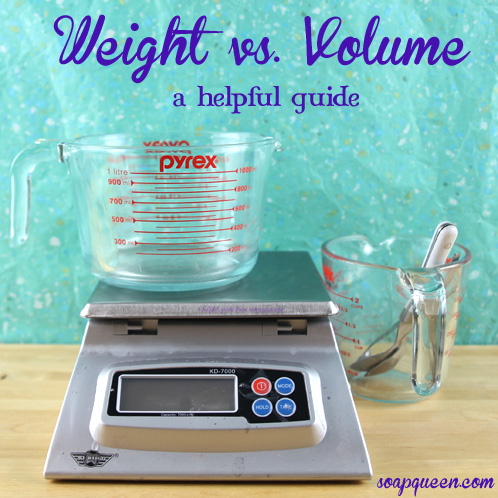
Keep in mind that unless otherwise noted in Soap Queen tutorials (and almost all soap and toiletry recipe books), ingredients are measured by weight and not volume. For example, you’ll rarely see a tutorial call for a “cup of oil,” because oils have different densities. Some oils are heavier than others, and so to get the most accurate measurement possible, weight measurements are used. That’s why you’re much more likely to see a recipe call for “2 oz. of oil”. Below is a general guide to the difference between weight and volume, and what it means when you are purchasing and working with Bramble Berry’s products.
Weight: Weight is determined by the heaviness, or mass, of the particular item, and is measured with the use of a scale. We sell most products at Bramble Berry by weight so that you are getting the same amount every single time that you order. It’s also helpful in determining the amount of product to buy for your favorite recipes. Products sold by weight at Bramble Berry include popular items like butters, fixed oils and fragrance or essential oils.
Volume: Volume is the amount of space that an item you are measuring takes up. It’s a common measurement in food recipes and recipes where ratios are more important than precision. For example, if you’d like to make a baby oil recipe that does not require a chemical reaction (like emulsion or saponification) and the goal is to utilize the space of your packaging/containers while maintaining a specific ratio of ingredients, volume measurements are the way to go. When you’re looking for packaging, note that containers, jars, bottles, etc. are labeled by their volume measurements, or the amount of space that a product will take up within them. An 8 oz Bail Jar will hold 8 oz of product by volume, not necessarily by weight, so keep that in mind if you’re working with a hand cream recipe whose yield is measured by weight.
Here are some visuals to help you out. Let’s say you’ve ordered 6 different Bramble Berry Fragrance Oils, all in a 4 oz size. Your order might look something like this:

And you’re thinking, huh, did some of my bottles leak? Why is the Ginger Ale filled to the brim but Vanilla Select is only about 3/4?
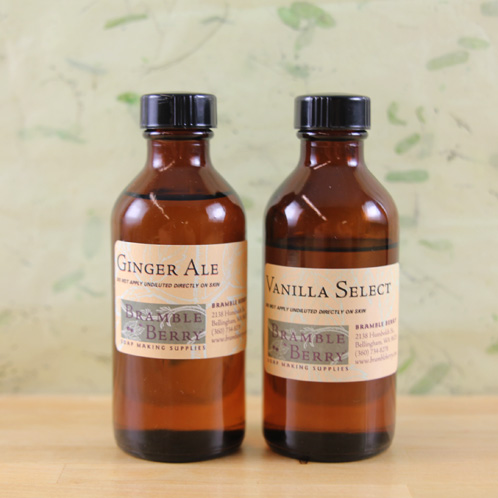
The (literally hundreds of) components that make up individual fragrance oils can vary based on what the final scent goal is. Typically you’ll discover that sugary-sweet fragrance oils are more dense, heavy and viscous, while a citrus-based fragrance oil might be relatively light and thin in density. Hence, when your Bramble Berry fragrance order is hand-poured and weighed to order, you are getting accurate weight measurements while visually, it appears that your fragrance oils aren’t quite matching up.
Check out the difference between Green Chrome Oxide (on the left) and Titanium Dioxide (on the right). Both are weighed out to one ounce, but clearly the Green Oxide is the more dense and heavy of the two colorants. Think about the old joke “Which weighs more, a pound of feathers or a pound of bricks?” The joke being that they weigh the same, but will visually appear to have very different measurements.
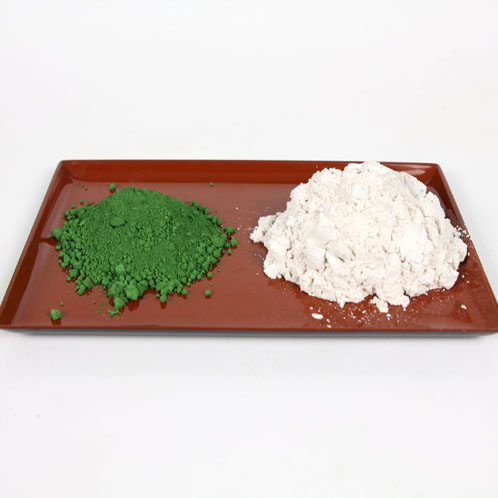
Even the same exact product can vary in its volume vs. weight measurements! Below are some common fragrance and fixed oils measured by both volume and weight. The glasses on the left show 4 oz. of oil by volume while the glasses on the right show 4 oz. of oil by weight. You’ll notice that throughout the photos, the level of liquid on the left stays consistent while the level of liquid on the right fluctuates. A volume measurement will remain visually static regardless of the weight or viscosity of the article being measured. A weight measurement will vary to the eye, but not to the scale.
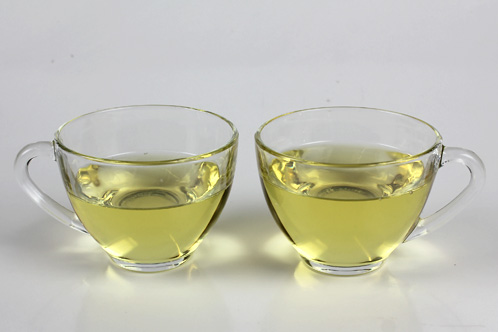
Wasabi Fragrance Oil by Volume/Wasabi Fragrance Oil by Weight
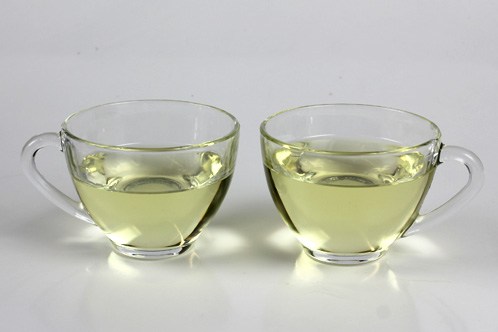
Pink Grapefruit Fragrance Oil by Volume/Pink Grapefruit Fragrance Oil by Weight
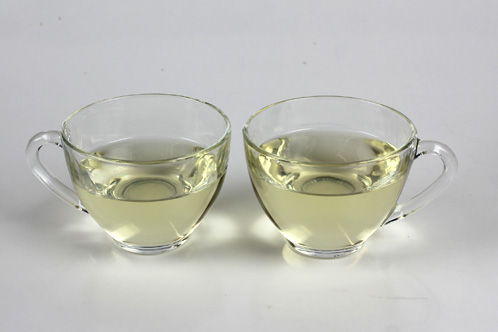
Sunflower Oil by Volume/Sunflower Oil by Weight
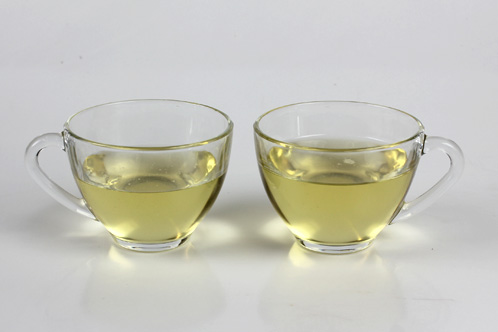
Castor Oil by Volume/Castor Oil by Weight
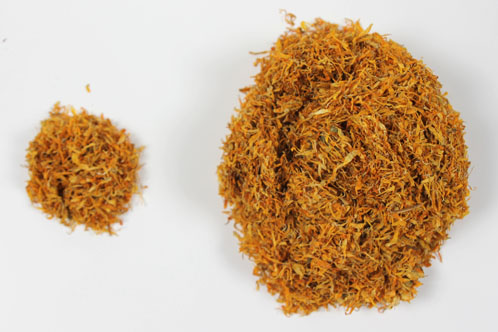
And finally, here’s an herb that really illustrates what we mean! On the left is Calendula measured by 3 ounces of volume, and on the right there is 3 ounces by weight. Because this herb is so light and fluffy, it takes significantly more to achieve 3 ounces of it by weight. For more examples of weight vs. volume, check out this previous blog post.
Have any more questions about Weight vs. Volume? Let us know in the comments below!